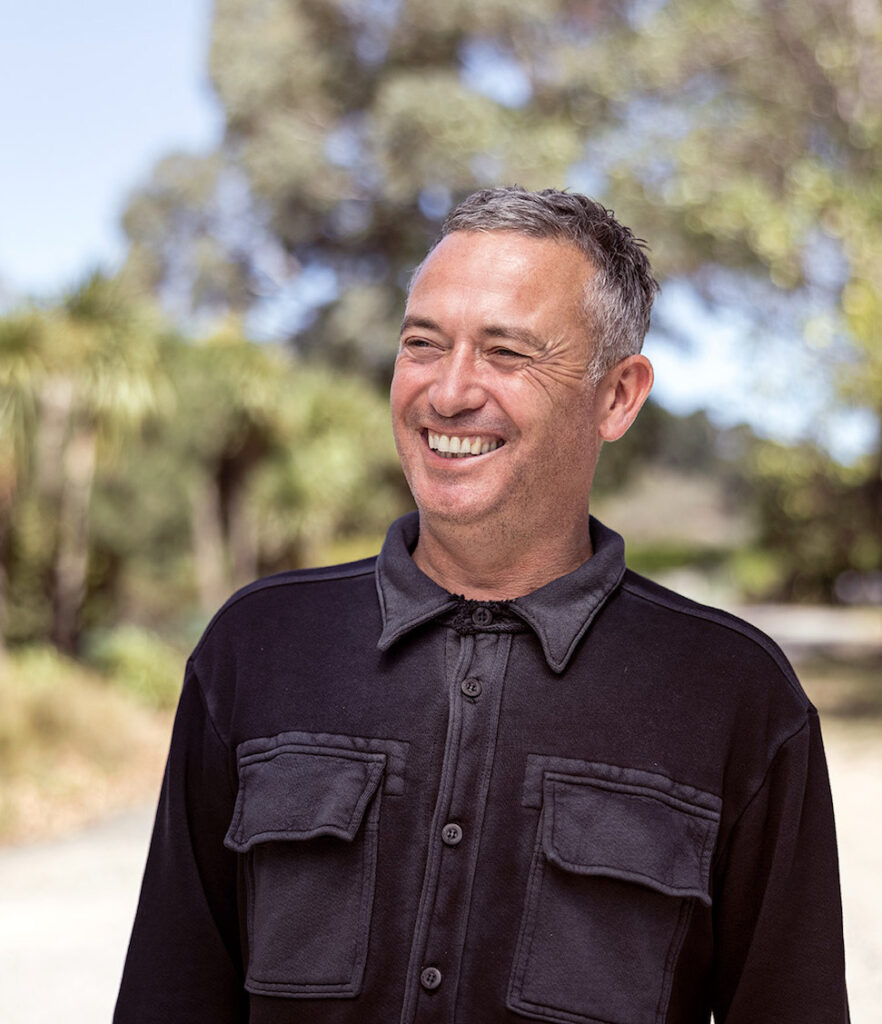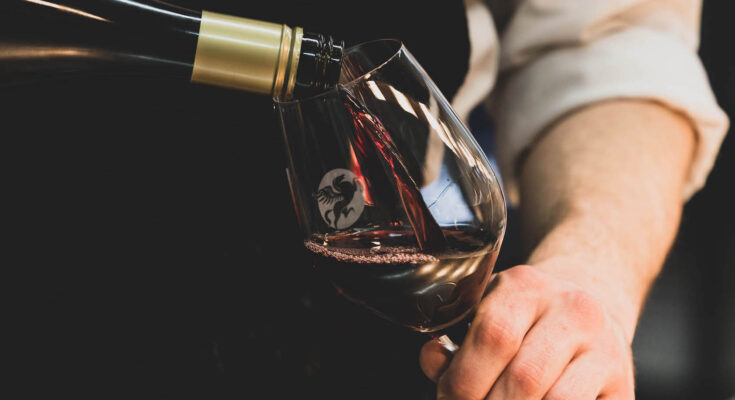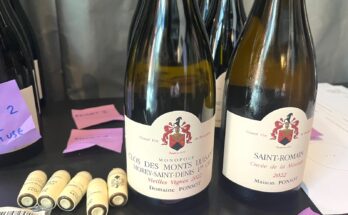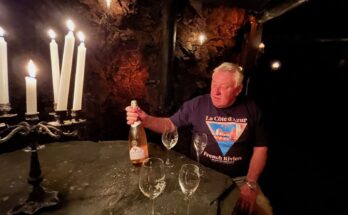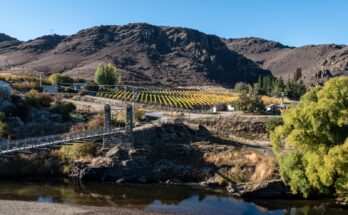In April 2020 I was booked on flights to Christchurch and plans to visit the North Canterbury region of Waipara on one of my “Field Trips”, before COVID-19 sent the country into a complete lockdown. Flights were cancelled, the schedule torn up; and the news that the wine harvest could happen (under very strict ‘essential worker’ protocols) was the only glimmer of good that came out of those worrying weeks. A year and one month on, I’m back in Canterbury, determined to make good on the promise that I would come and take a look. First stop is Pegasus Bay, where I’m meeting one of the family that run the business – Edward Donaldson.
Wine Folio: Last time I was due to be here was the day that you announced that the iconic Restaurant had closed – literally I would have been here at 10am, and I remember seeing that news at 9.45am on that day, and that really hit home.
Edward Donaldson: My wife Belinda ran the Restaurant, but we made the decision pretty early on going into COVID We didn’t know that we were going to be just about the only country in the world that was going to be able to continue without too many problems. But with the borders closed, a lot of our weekday customers are international visitors and then a really good weekend trade from our locals. We were concerned that the weekdays would be really dead with the borders closed. We thought it would be a better use of the space to offer it for private use and events. We’ve also been doing our own things like Guest Chef collaborations with chefs from around the country every eight weeks or so. We’ve got another one coming up with Corey Campbell who’s doing a truffle lunch. It’s been a good way to keep the spirit of the restaurant alive.
WF: Has it felt a bit sad though, not having the restaurant?
ED: It cost us to operate the restaurant, but we deliberately operated it in that way. If we’d intended to make money we wouldn’t have done it in the way that we did. It was looked at as a marketing tool, to get people to come out here. Hopefully have some great memories and help build the brand.
It was a bit sad initially, but then actually has been quite nice to not have the pressure of a restaurant every day. We had a great team of about 25 staff, and managing that hospitality side of the business comes with its own pressure. I managed the restaurant for fifteen years, and then my wife has done the last fifteen. I know what’s involved. This format is a lot less stressful. You can book it out for a wedding, a party of any kind and we’ve got a few different caterers we work with. So, venue hire, and then Belinda works with the customers to come up with whatever they want for the event.
And the co-labs are a way to do something interesting, fun and cool. We promote it through our wine club, but the general public as well through social media. I would say it feels quite nice where we’re at.
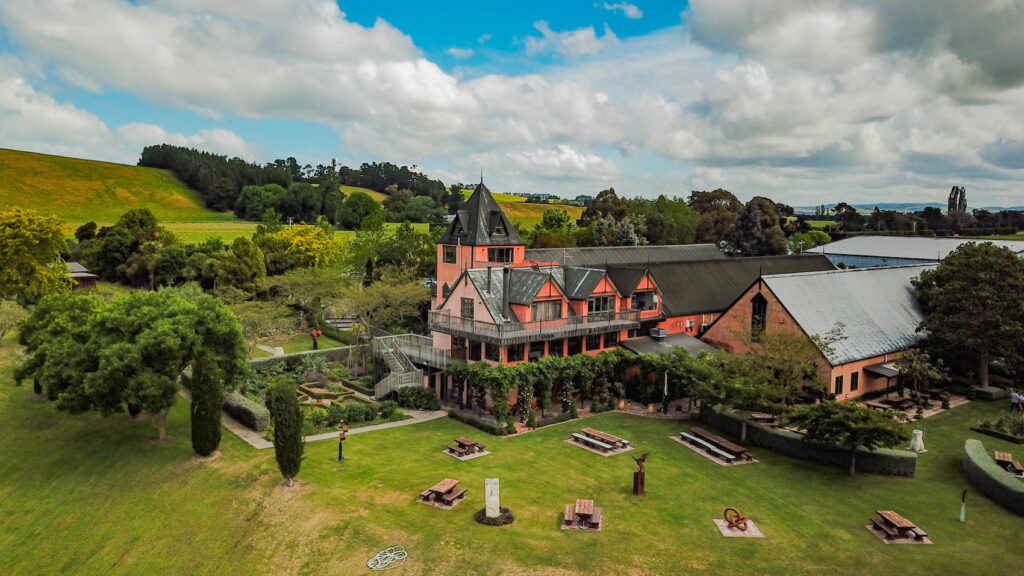
WF: Can you get something to eat in the Cellar Door when that’s open?
ED: Not at the moment, but we are looking at a very basic offering in there. Just some deli items and keep that super simple. Cellar Door has been good. Surprisingly good actually, we’ve been pleasantly surprised. We did close over the weekdays during the winter as they were really quiet, but then we were seven days over the summer months. I think we are close to 70% of the turnover that we were doing at the Cellar Door, but only open for 2 days in the winter, so all in all it’s been pretty solid.
WF: The place still looks amazing. Certainly doesn’t look any different.
ED: My mother, Chris, who takes care of the gardens, and has an amazing right-hand woman, Paula, who helps. We haven’t scaled back on any of that side. Even though we’re only open on the weekends with the Cellar Door, people can come seven days a week and walk around the gardens, and we get plenty of people doing that. With events and that type of thing, the grounds and gardens are a big drawcard.
Our vineyards are just over there, within site of the winery building. Over there by the top of that tree is our first block of Riesling. Behind that is our Terrace Block which has a big diagonal terrace running through it, and that is our original planting from 1985. My Mum and Dad, myself and brothers who were involved in planting that. And then we’ve got a block close to the river, called River Block, and that was planted about 25 years ago.
We’ve added a lot of different clones. With Pinot Noir we originally planted three clones, then 25 years ago nine or ten different ones, so we’ve got a big clonal mix. They go into our blend for the Pinot Noir. We’re understanding the vineyard more and more over time. We don’t use any pesticides now – over time we’ve worked out how to do things without that. We’ve got a big organic compost area, that’s made from grape marc and organic waste material that gets applied back on the vineyard. A few other new-ish varieties. So we’ve got Muscat planted, but we’re pretty much sticking to the classic varietals. The Pegasus Bay range is single varietals or traditional blends.
Then we’ve got the Vergence label, which is new, and there’s a white and a red. Vergence is where the pupils of the eyes look inwards and outwards whilst focussing, so we’re saying we’re looking outside the square a bit. It’s a label for non-traditional and quirky wine styles. We’ve been playing around for quite a few years with Semillon-based blends that are not necessarily traditional. We do the Sauvignon-Semillon which is traditional, but we’ve been looking at other potential components that could work. Matt’s been trying things for a while in the winery, and in 2016 felt that he had a blend of various different varietals to go with the Semillon as the core of the wine. The new vintage is actually non-vintage and multi-varietal. It’s got Chardonnay, Sauvignon, Riesling, Gris, Muscat and Gewurz. And from multiple vintages. Had some full-solids ferment skins… so yeah. The Vergence Red is 100% whole bunch Pinot from Central Otago.
WF: I really like to see some of the established, classic labels, still learning and pushing boundaries. You could just sit back, pump it out – people love it. So it’s great to see.
ED: We’ve always experimented. This is a good additional outlet for Matt to do something extra. Our Home vineyard is 35 years old now, so starting to get a decent bit of vine age there. All the original plantings are ungrafted and on their own roots. We’re on Glasnevin Gravels where the river has changed course over hundreds of thousands of years, and rocks have been washed down. So really free draining – a bit like the Martinborough Terrace. Greywacke soil, a little bit of silt and loam, but free-draining stones.
WF: How would you say North Canterbury fits in with the other wine regions of New Zealand? I’ve been trying to go round and visit, and find out.
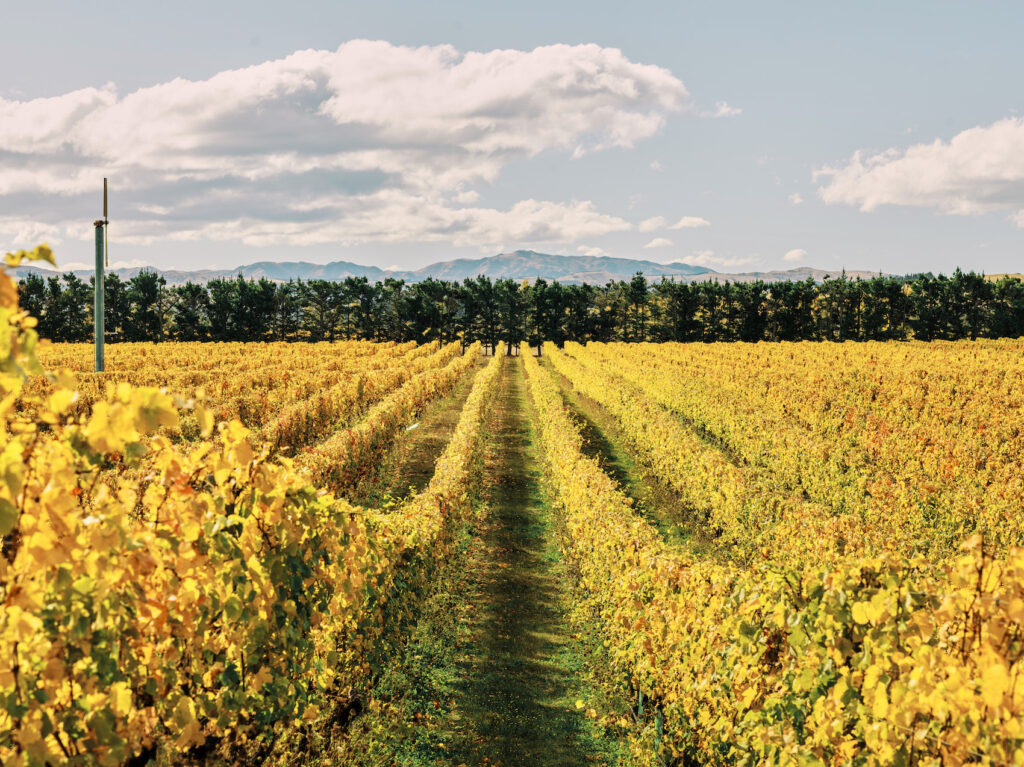
ED: Honestly, the reason we planted in Canterbury was because that’s where we’re from. My Father was a Consultant Neurologist who got into wine back in the ‘70s and planted one of the first vineyards in the region in ’75, I think. Lincoln College was just experimenting with a block around the same time. Dad tinkered around and made the wine in the garage at home as a hobby with a group of other people. He taught himself to make wine from books. Then decided after a few years that he wanted to do something on a bigger scale. He thought there was a future for growing grapes in the region, so we looked for a block of land and settled here mostly because of that big range of hills over there – the Teviotdale Range, and that gives us shelter from the easterly. Most of Canterbury is exposed to the easterly but we’re usually a couple of degrees warmer because of those hills. Also, Dad had an established practice here, and he was the Head Neurologist at Christchurch Hospital.
One of the benefits that we really love about the region is that it is really dry, so that’s really good for pest control. And a long period of time from bud burst to when we harvest – means a long growing season for the fruit. But over flowering we quite often get unsettled weather so our crop levels can go up and down quite a bit. Typically crop levels in Canterbury are notoriously low, and that’s meant that there’s no big commercial multi-national companies based here producing large volumes of wine. Most of the producers in Waipara Valley are small and family-owned.
Dad is no longer involved in medicine as he retired some years ago. He oversees the vineyards, working closely with Greig Miller, our viticulturist. Mum does the gardens – she’s planted virtually every tree on this property, with help from Paula. I do the Marketing. Younger brother Paul is General Manager. Another brother, Mike, does our local Sales, and oldest brother Matt is the Winemaker. Belinda, my wife runs the hospitality side. Paul also makes a bit of cider – Scoundrels and Rogues cider.
WF: What is behind the move to the re-branding as North Canterbury?
ED: There was confusion over Wairarapa and Waipara – even in New Zealand, never mind when you start heading into exports. I’ve come across that a lot when I’ve been travelling overseas doing promotions. That was part of it. The other, more important, aspect of it is that the Waipara Valley is just one sub-region of the greater North Canterbury region. That’s north of the Raikaia River, so Canterbury Plains, Banks Peninsula, Waipara Valley, Waikari and Cheviot. A bit like they do in Central Otago – that promotion is what Canterbury should have been doing a long time ago.
WF: I’m not a born and bred New Zealander, so I was surprised to read their history and hear that the Giesens started off in Canterbury, because I think of them as an iconic Marlborough label.
ED: Yes, they were down the Main South Road there. I remember as a child they had an operation running down there.
WF: Are Pinot and Riesling the two most important varietals for the Pegasus Bay brand?
ED: They are our two key varieties, and roughly one third of our vineyards are dedicated to each of those, so one third Pinot Noir, one third Riesling and one third others. We don’t make a straight Sauvignon Blanc under the Pegasus Bay label, we always blend with Semillon so it’s more food-friendly and something you could age. Chardonnay is becoming increasingly important in the range, and a Bordeaux blend of Merlot and Cabernet – which we are quite far south to be growing those varieties. We manage to ripen the fruit to a level that we’re happy with in most vintages.
WF: What do you think the next big thing will be for New Zealand?
ED: Who knows how far it will go but Cabernet Franc and Chenin Blanc seem to be two varieties that are doing well. There’s some producers here in North Canterbury, and we’re about to release our first Cabernet Franc as a single varietal shortly. We normally blend it with the Bordeaux Blend, but it’s good to see. We planted Syrah but there was only 2010 that we were happy enough to release it as a wine, so we grafted over that with Pinot.
In terms of Chardonnay, that is absolutely something that has potential. We’re part of the Family of Twelve, and almost all the events have been Chardonnay or Pinot Noir focussed. International media have, for a few years, started to pick up on the quality of New Zealand Chardonnays. Especially for the price when you compare that.
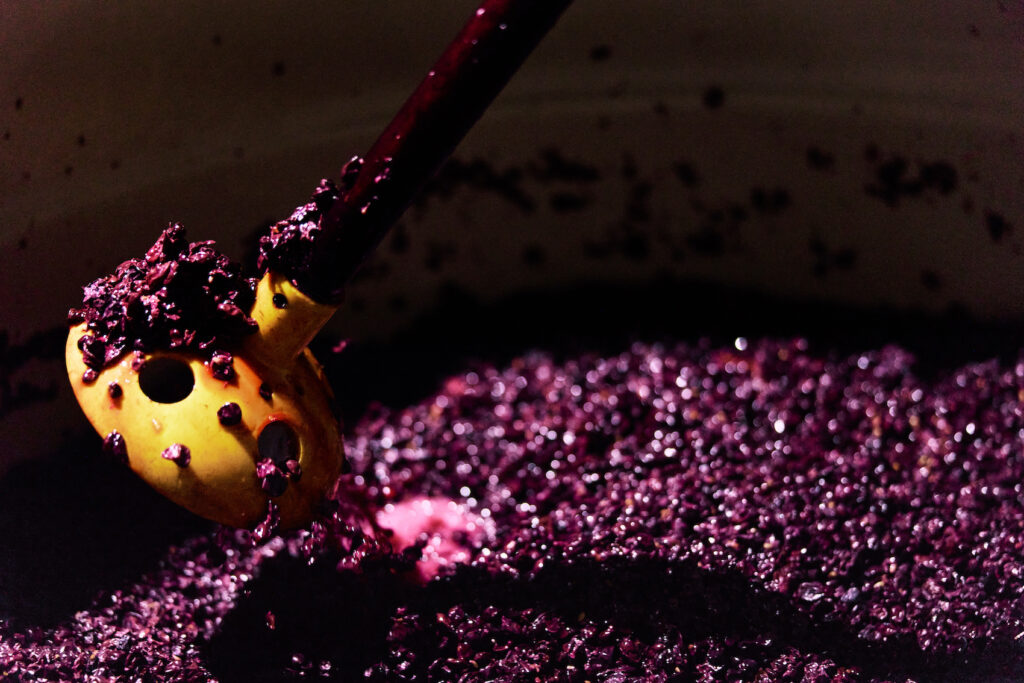
WF: what do you think about Sparkling wines, for New Zealand?
ED: The thing is that Champagne have such a good job of marketing the brand ‘Champagne’ that so many people have this impression of if they want to celebrate, they want Champagne. Of course there are other alternatives, like Prosecco, at a much lower price point and a different market. I get the impression that people go for bubbles from where they’re from. So in Australia you see quite a large range of Australian Methode Traditionelle styles. And in New Zealand you’ve got a number of them as well. And people tend to go Champagne, or Prosecco, or the local stuff.
WF: I wonder if there will come a time where people get past that ‘Champagne’ thing? Where it loses its relevance?
ED: Champagne have done the best marketing job of any wine region, ever. Created this illusion that somehow Champagne is more special and valuable than any other wine. Which I don’t think is true at all These big Grand Marques have got massive amounts of money behind them, and Scarlet Johanssen on a billboard or whatever, and you can’t really compete with that. And then Grower Champagnes which are making really fantastic wines – at least as good as the big brands for a fraction of the price.
Certainly at the moment, and I imagine for the foreseeable future, I don’t think there is an export market for Methode Traditionelles. I don’t come across New Zealand bubblies in export markets at all. In New Zealand you don’t see American sparkling, or German ones, or anywhere else really that’s not Champagne or Prosecco. You might see it overseas at somewhere like Providores that has the New Zealand connection.
But definitely New Zealand Chardonnay. There’s not that many places in the world that can produce cool climate Chardonnay like we do here. I love white Burgundy and I drink as much of it as I can afford to, but it gets pretty expensive. Producers like Kumeu River have done really well where they’ve done blind tastings, and their wines have shown up incredibly well in wine tastings with really good quality white burgundies. Jancis Robinson massively sings their praises, and a lot of other wine writers as well. They’re not just one of the top Chardonnay producers in New Zealand, but in the world. You look at what you pay for those wines and it’s just incredible value.
We decant ourselves back to the Cellar door, where there’s a multitude of glorious (empty) bottles of wines on show.
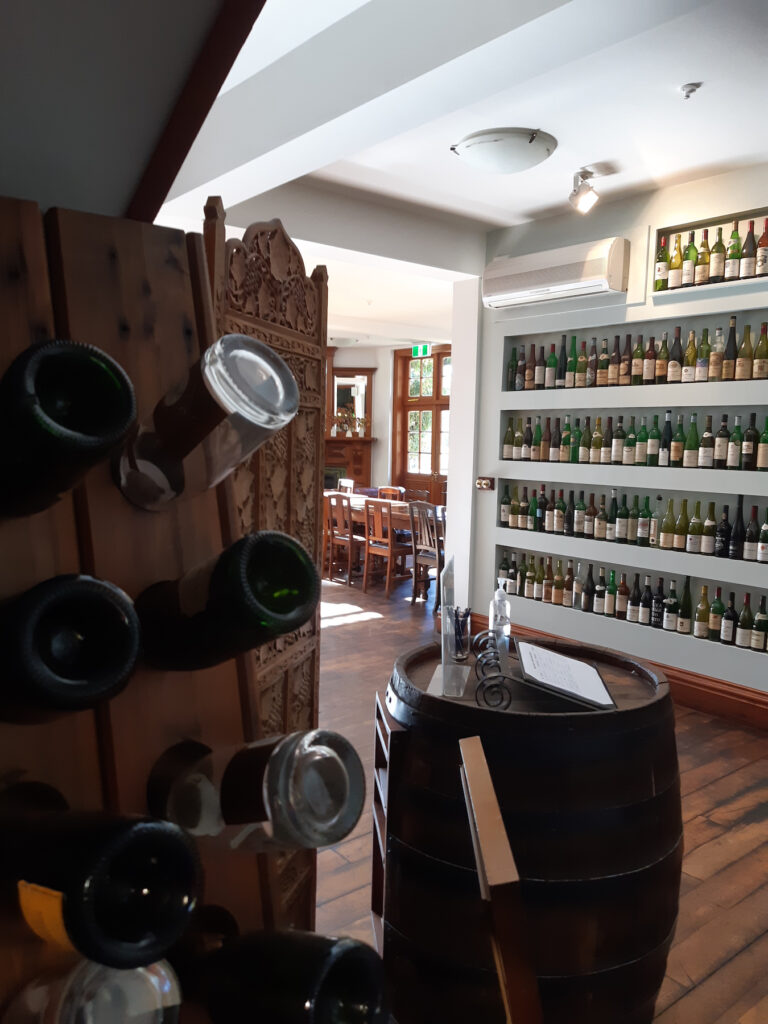
WF: You’ve had the occasional decent bottle of wine over the years then?
ED: Some of the Riesling events we had on over the years, yes. The dead soldiers there are bottles that various family members have enjoyed over the years.
I’ll show you this Vergence White first. The core of the wine is Semillon, around 80%, and then the other varietals I mentioned before. All the fruit is from our Home Vineyard here, but the Semillon is pretty ripe and concentrated.
WF: Beautifully aromatic. Love that top note of the Muscat – it’s like all the best bits from those varietals and a real power to the aroma.
Nicely integrated on the palate – quite balanced from something with so much going on. Love that waxy texture and a distinctive apricot, quince flavour to it. Nice lift from the Gewurz – I can sometimes be a bit uninspired by Gewurz – I have to be in the mood for it. I’ve got some reasonable ones and they just kind of sit there, year after year. I just think ‘next time’ and next time never comes.
ED: I find I’m like that with dessert wines too. When I do have one I think ‘must do that more often’
WF: Ooooh I love a dessert wine. I did my first judging stint this year at the Royal Easter Show and we got the dessert wines, so I was very pleased with that. I don’t have any winemaking knowledge or background, so it was a bit daunting to do that, but I think I did my bit – coming from a consumer-focussed writing-about-wine side of things.
ED: That’s just as relevant really. Especially when you’re looking at scoring wines to inform the public.
(pours wine) That’s the Sauvignon-Semillon 2018, so that’s the one we’re just about to release. You can comfortably age these for ten to fifteen years. Even more which is unusual for a Sauvignon based wine from New Zealand. Roughly 70% Sauvignon and 30% barrel-fermented Semillon. Aged on solids and lees for about ten months. Quite a textural sort of wine. Refreshing but rich, some depth and complexity and length.
WF: I’ve been putting a few Sauvignon Blancs away for a few years to see how they go with some age on them. I was at Lion Rock and they had some 2004s I think, so I snaffled those.
ED: I’ve got an old one here somewhere – a 2009 I think, we can have a look at.
WF: That Sauvignon-Semillon would be a wonderful food wine as well.
ED: Yes, that was kind of the reason for going in the direction of having Semillon in the mix, was to make a more food-friendly style. They remain quite fresh, but they take on a slight lanolin, wet wool character.
WF: I almost like how the acidity is in that, even more than the current release! It’s very refreshing, but it’s got a salinity and pithiness in there now as well. Every time I have an older Sauvignon-based wine it just reinforces my thinking about ageing them.
ED: In 2018 we moved to doing a little bit of skin contact, just to get a more tannic, phenolic component to that wine. And in 2020 we’ve gone further – it’s had 300 days on skins! So it’s quite a different wine.
WF: I was in Australia, in a fairly big wine shop in Melbourne. And I was looking at Chardonnay when a shop worker asked if they could help me. I said ‘look I’m here from New Zealand, and I know my local NZ wines pretty well, but I’m no expert on Australian whites..I’m looking for something with character’ and they said ‘let’s just go for a little walk’ and took me around to Semillon. Current vintage was something like 2010. I just said “I love you”.
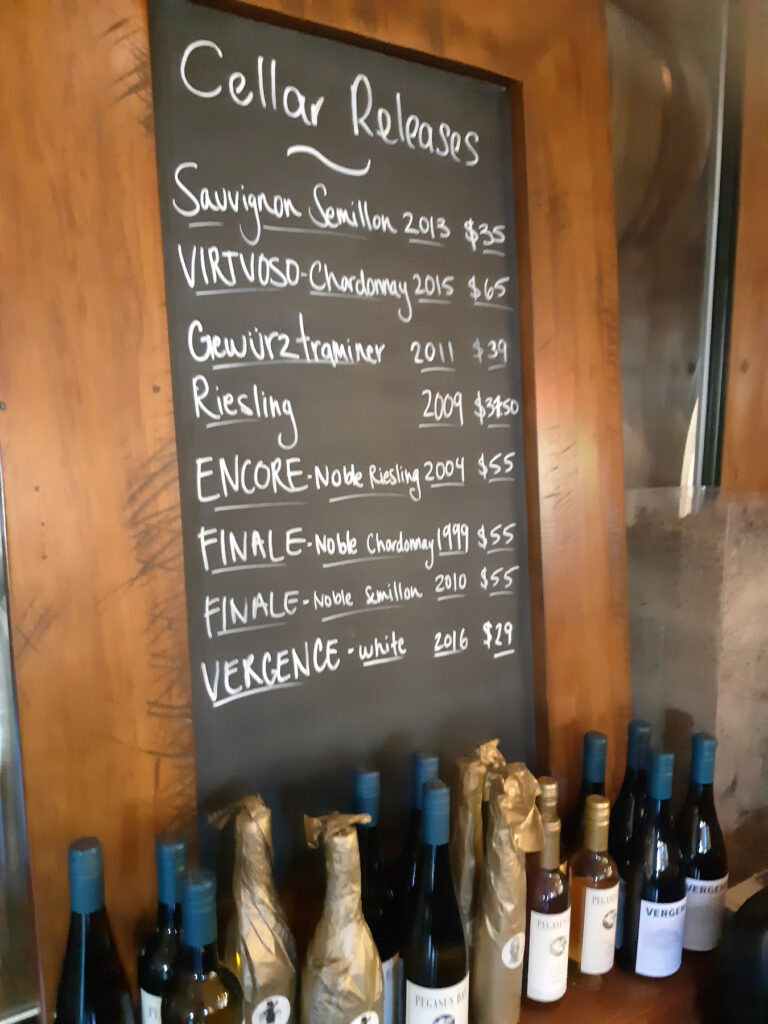
ED: Some of those Hunter Valley Semillons are just incredible value. Its not a fashionable variety or region, especially in Australia. And it should be. It’s recognised worldwide as a great wine. But for some reason they don’t seem to sell that well. I love them.
I might just do some Pinots…(pours wine)
This is the Vergence Red, and the fruit is from Central Otago, from Bendigo.
WF: Are you allowed to tell me the vineyard?
ED: I’m not. Because we make wine for this person who owns the vineyard, and they have their own brand name for the vineyard. We’ve done this as 100% whole bunch Pinot. Quite ripe and succulent fruit but then it’s got that really nice spicy whole bunch, carbonic maceration character going on where it’s fermenting inside the berry. Gives quite distinctive flavours, but I love that style. Get some of that herbal character and stem as well.
WF: I’ve had a couple like that and it tends to be a love it or hate it style of Pinot. I like the ‘pop’ of it. Personally I love it. I’m open to new styles of wines. I love learning about them, even if they’re a bit edgy. What do think of ‘cult wines’?
ED: Cult wines have got their place I guess. Usually they head that way because of some kind of track record of quality, but maybe some clever marketing that goes on as well. Something like Champagne with the Ace of Spades one. I think, for the most part, that cult wines gain that status through years and years of producing high quality wines. If your wine doesn’t stack up it’s hard to get that true cult following. Maybe they get that way through really high scores. The whole ‘Parker palate’ thing is a bit dated now, because he doesn’t even really review wines any more, it’s all just specialists in their own sort of areas. It’s not like there’s this one specific palate that’s the ‘Parker palate’. But it is still just a small handful of writers and publications that have the ability to take a brand to that cult status. Once that does happen though, you generally see some pretty high prices.
WF: Why do you think some producers in New Zealand haven’t done that then? There are some producers I could think of here who could do that? Say “it’s not $80 any more, it’s now $200”
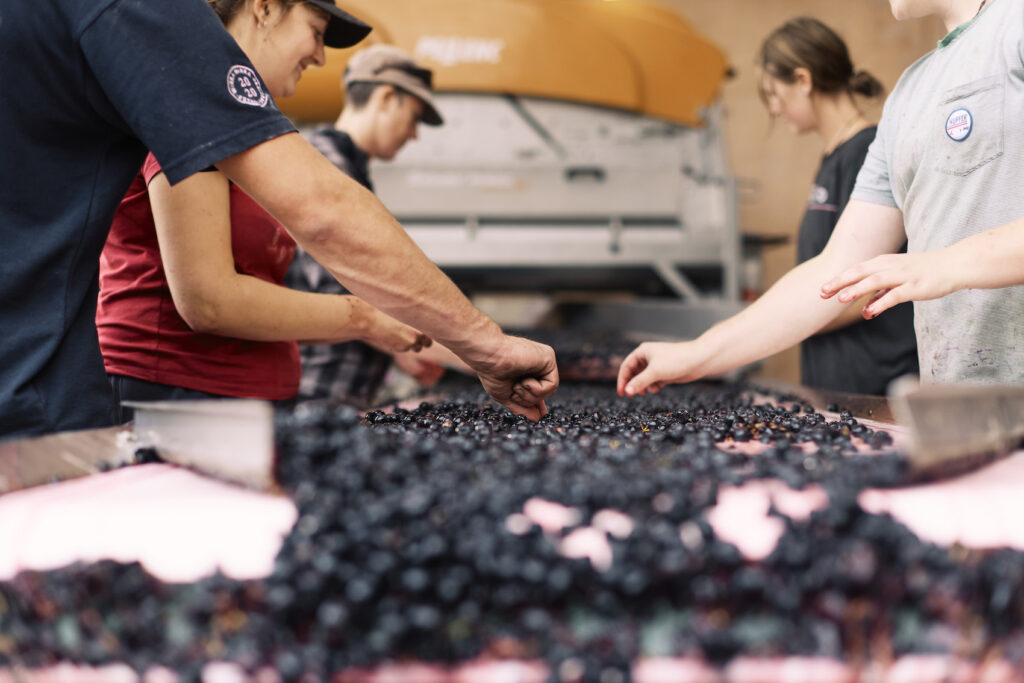
ED: I have full respect for them for not doing that. We’ve tried to be the same with what we do here as well, with wines that we could potentially charge a lot more for. With something like Prima Donna we want to hopefully offer really good value. And that’s across all our different price points. Maybe an example of a brand that hasn’t inflated its prices is Felton road. Yes, their wines aren’t cheap. I’ve spoken to Nigel about this before – where they thought about charging a lot more for wines like Block 5 that are really scarce – and the idea of that really turns him off. The most important thing they got right was the quality of the wines, but then the way their brand is marketed is really different from others. Nigel is a really clever guy – his brain just works differently to other people’s!
We release two aged wines every year, Pinot and Riesling – 2011 is our current ‘aged release’. We do ten years from whatever the current year is. I love aged Pinot when there’s still quite a bit of nice succulence, still some fruit hanging in there but you’re starting to get those really nice secondary, savoury notes.
The Prima Donna is a barrel selection of our oldest ungrafted vines that comes from a certain part of the vineyard. We don’t make it every year. We hold it back in bottle for longer. We do a minimum of a year in bottle for all the Pegasus bay wines, but we do two years for most of the Reserves. That part of the vineyard gives us smaller berries form the older vines.
We’ve produced our wines under screwcap since 2002. A lot of other people had moved to it before we did. We saw all the research but we wanted to do our own trials. We did seven years in our cellar of cork versus screwcap before we decided to make the move. It makes the ageing so much more consistent, with little bottle variation. We get quite a bit of vintage variation in all of our wines, and because we do a lot of small components – we don’t harvest all the grapes for one variety at once, we can do our final blend process to produce a high quality wine every year, just not necessarily the same wine, in the same volumes, every year!
I’ll show you a couple of current releases of our Estate Riesling, and then an older one, the aged release, and also an Aria. The Estate is made off-dry, it’s the Riesling style we’ve been making for longest. We hang the fruit a lot longer than most people do, so a lot of the berries are starting to shrivel at the end of the season, therefore we make quite a ripe style. We do make a dry Riesling called Bel Canto, that is picked quite late but then fermented dry.
2011 was quite a warm vintage, and I think this aged version has just a hint of marmalade in it. It’s quite a distinct regional character – that kind of orange rind character. The later we harvest the fruit, the more of that kind of character we get. And with Aria, we use whole bunches where about a third has botrytis. So not a full-blown dessert style, but heading in that direction. It’s about 80 grams per litre. And I’ll have to get you to try this dessert wine – Finale 2017. Our botrytis Semillon-Sauvignon with a bit of barrel age. Full botrytis, so it’s getting up to about 180 grams or close to that. Pretty concentrated. It’s got that slightly oxidative character that you get, and savoury, nutty thing going on, with the oak influence.
WF: I like to start a meal with something that’s got a bit of sweetness to it, and this is just perfect for it. A really nice pate or terrine and this just cuts through that richness. Not super sweet, but with that balance of acidity and sweetness. Salivating! And then you go dry white, then red, and a sweet finish. After having a bottle of bubbles standing up, as people arrive, of course!
